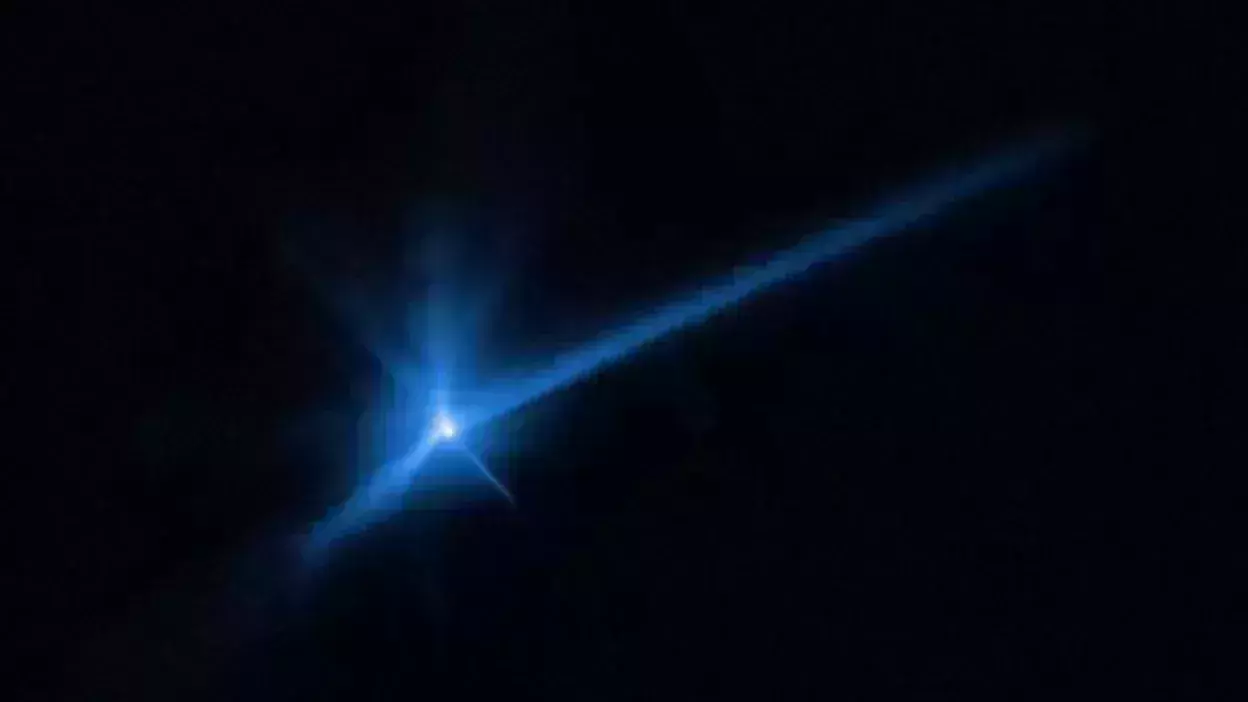
Hubble captures NASA spacecraft-asteroid Dimorphos collision
text_fieldsNASA's Hubble Telescope has captured a series of photos of spacecraft DART (Double Asteroid Redirection Test) deliberately colliding with asteroid Dimorphos on September 26, 2022.
The US space agency's statement said that the time-lapse movie of the aftermath of the 1,2000-pound spacecraft's collision with the asteroid has revealed "surprising and remarkable hour-by-hour changes as dust and chunks of debris were flung into space." The spacecraft smashed into the space rock at a speed of 13,000 miles per hour. The collision blasted over 1,000 tons of dust and rock off of the asteroid.
Experts said the images have provided clues into how debris was dispersed into a complex pattern.
The collision's primary objective was to test mankind's ability to alter the asteroid's trajectory. It orbits Didymos, its larger companion. Neither asteroids pose a threat to Earth and the mission will help researchers learn how to deal with a potentially harmful asteroid in the future. Researchers are also keen to learn about planetary collisions that were common in the early days of the solar system.
The Hubble movie starts 1.3 hours before impact and shows three overlapping stages of the impact aftermath - the formation of an ejecta cone, the spiral swirl of debris caught up along the asteroid's orbit about its companion asteroid, and the tail swept behind the asteroid by the pressure of sunlight, resembling a windsock caught in a breeze, said NASA. Since both asteroids are within the central bright spot, Hubble cannot resolve them separately.
"The DART impact happened in a binary asteroid system. We've never witnessed an object collide with an asteroid in a binary asteroid system before in real-time, and it's really surprising. I think it's fantastic. Too much stuff is going on here. It's going to take some time to figure out," said Jian-Yang Li of the Planetary Science Institute in Tucson.
The first image after the collision was taken two hours after the event and debris is seen flying away from the asteroid. It is moving at a range of speeds faster than four miles per hour, fast enough to escape the asteroid's gravitational pull, so it does not fall back onto the asteroid. This forms a largely hollow cone with long stringy filaments. The pattern enters the second stage after 17 hours. "The dynamic interaction within the binary system starts to distort the cone shape of the ejecta pattern." The most prominent structures are rotating, pinwheel-shaped features. The pinwheel is tied to the pull of Didymos.
The next images show the debris being swept back into a comet-like tail by the pressure of sunlight on the tiny dust particles. "This stretches out into a debris train where the lightest particles travel the fastest and farthest from the asteroid. The mystery is compounded later when Hubble records the tail splitting in two for a few days."
"This is really unique for this particular incident. When I first saw these images, I couldn't believe these features. I thought maybe the image was smeared or something," said Li.
The video was uploaded on YouTube.























